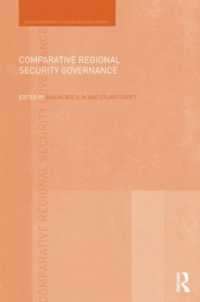Description
A highly original reinterpretation of how race and class shaped the entirety of Southern history through the experience of four interconnected family lines. The Southern Fault Line explores the under-appreciated division in the South between the oligarchic rule of plantation owners and industrialists on the one hand, and the more democratic mindset of the mountain-dwelling small farmers on the other. These two mindsets were in continual tension from the 1800s to the 1960s, when the adherents of the more democratic side of the struggle capitulated to the oligarchical side in response to the Civil Rights movement.Bryan Jones draws from his own family's centuries-old history in the region to explore the rise and fall of the "two minds" of the South. Through a comparison of the experiences of a slaveholding line in his family with three non-slaveholding lines, Jones provides a rich history of the politics of both class and race in the region from the Founding era to the present. The slaveholding side of his family settled in Black Belt Alabama, while ancestral members of the other side of his family were poorer uplanders. In the 1890s, the latter supported the burgeoning populist movement, which for a short window of time tried to unite poor Blacks and poor whites against the patrician planter class and industrialists. After a series of close elections, the planter class was able to stanch the populist tide. They did this in large part by sowing racial division among populism's supporters. Indeed, one of Jones' ancestors helped draft the 1901 Alabama constitution that made Jim Crow the law of the state. Throughout, Jones shows how deep the political differences were between the two regions, with oligarchy characterizing the slaveholding region and a more democratic ethos shaping the non-slaveholding areas. Jones serves as the final observer, a white boy observing not only the demise of the Jim Crow South, but--in the wake of the Civil Rights movement--the demise of the mountain democratic South as well. Today, the vast majority of Southern whites regardless of class support an oligarchical Republican Party.
Table of Contents
ForwardChapter 1: Southern Democracy or Southern OligarchyChapter 2: Blount and SumterPart 1: Slaves, Owners, and the Black BeltChapter 3: The Lasting Legacy of SlaveryChapter 4: Plantation PoliticsChapter 5: Myth and Reality in the Black BeltPart 2: Upland Uprising On Sand MountainChapter 6: Removals, Religion, and the White RepublicChapter 7: North Alabama Sand Mountain PeopleChapter 8: Yeoman Farming in the MountainsChapter 9: North Alabama in War and ReconstructionChapter 10: "The Blowhard of Blount"Chapter 11: "Our Demosthenes"Part 3: Traverses of the Common White ManChapter 12: The Two Faces of Brother Charley JonesChapter 13: Charley Jones Goes to WarChapter 14: The Life of a South Alabama Tenant FarmerChapter 15: "I Was Greatly Embarrassed Because of My Ignorance"Part 4: The Brackets of Jim CrowChapter 16: A Lynching Thwarted and a Brutal MurderChapter 17: The Arc of InjusticePart 5: The Tragic Failure of Southern ModeratesChapter 18: The Greatest GenerationChapter 19: Three Southern EditorsChapter 20: The Center Does Not Hold: The Evolution of an EditorPart 6: The Collapse of Jim CrowChapter 21: A Bad Hotdog and a Big OrangeChapter 22: The Pallbearer Who Could Not Go Into the ChurchChapter 23: Roll Tide at High TideChapter 24: Looking Back to Look Forward








